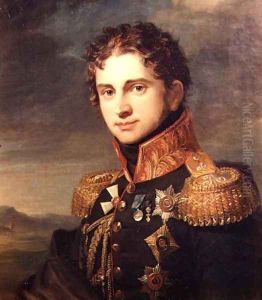P.A. Stroganov Paintings
Pavel Alexandrovich Stroganov, often referred to as P.A. Stroganov, was a Russian artist born into the illustrious Stroganov family, which was well-known for their patronage of the arts and contributions to Russian culture. Born on July 22, 1823, in St. Petersburg, Russia, he was part of a lineage that had established the Stroganov School for technical drawing in the 18th century, which later evolved into the Stroganov Moscow State University of Arts and Industry.
Pavel showed an early interest in art and pursued his passion with dedication. His family's wealth and influence allowed him access to excellent education and travel, which greatly influenced his artistic development. Pavel Stroganov was particularly known for his work in the Academic art style, which was characterized by meticulous technique and a preference for historical and mythological subject matter. This style was dominant in 19th century Europe and was taught in most of the continent's major art academies, including those where Stroganov would have received his training.
Despite his privilege and connections, Stroganov was committed to his craft and worked to refine his skills throughout his life. He was not as widely known as some of his contemporaries, but he produced a body of work that was respected by those who knew it. His paintings often featured rich colors and elaborate detail, which reflected both his personal style and the broader tastes of the time.
P.A. Stroganov lived during a period of significant change in Russia, witnessing the country's transition through the reforms of Tsar Alexander II, the upheaval of the 1905 Russian Revolution, and the final years of the Romanov dynasty. His work, however, remained mostly aloof from the social and political turmoil of the era, adhering instead to the more escapist and idealized visions typical of Academic art.
He passed away on January 10, 1911, in his native city of St. Petersburg. Stroganov's legacy is less about individual fame and more about his contribution to the rich tapestry of Russian art history, as well as his family's longstanding commitment to the cultural and educational advancement of Russia. Today, his works can be found in various Russian museums and are appreciated by art historians and enthusiasts for their craftsmanship and historical value.
